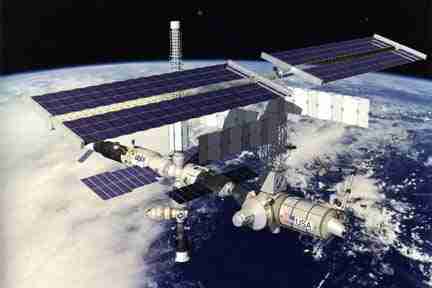 クリック:宇宙遊泳
クリック:宇宙遊泳
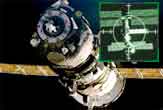



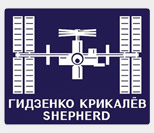
Expedition 1 Crew
Patch
 |
2000年12月1日、スペースステーションアルファSpace Station Alphaは地球のはるか上空を軌道に沿って飛行していた。最初の宇宙遠征の乗組員は2000年11月2日以来そこに居住していた。搭乗の技師セルゲイ・クリカレブはロシアのコロレブ(Korolev)の管制官と無線連絡をしていた。彼は話しながら、ステーションの外側に設置されているビデオカメラを操作していた。下の写真で左側はステーションそれ自身の端の部分である。左下の輝いている弓形のものが地球の日没の湾曲部である。直ぐに、不可思議なオブジェクトが遠くをビューと通過していった。このオブジェクトは隕石ではない、宇宙ではそれらは目に見えないのであるから。それらを熱したり、光を放射させる空気の摩擦は全くないためだ。それらはまた人工的なものでもない。人工的な宇宙船は常に東の方向へ移動する、ステーションはそれ自身そのように動いているのが見られた。何故ならロケットは地球それ自身の回転を借り、負荷にたいして時速750−1000マイルに加速するために、東へ向けて打ち上げられるからだ。この出来事の起きている間、シャトルエンデバー(Shuttle Endeavour (STS-97))は数千マイル離れたところにいて、2000年12月2日土曜日のランデブーを目指して接近中であった。
On 1 December 2000,Space Station Alpha was sailing along in orbit high above the Earth. The first expedition crew had been in residence since 2 November 2000.
On 1 December 2000,Space Station Alpha was sailing along in orbit high above the Earth. The first expedition crew had been in residence since 2 November 2000.
Onboard engineer Sergei Krikalev was in radio communication with controllers
in Korolev Russia. As he spoke, he was operating a video camera mounted
outside the station. To the left is the edge of the station itself.
The glowing arc to the left is the curvature of the Earth in sunset.
Soon, an anomalous object went whizzing past in the distance. This
object was not a meteor, as they are invisible in space. There is
no air friction to heat them, and make them emit light. It is also
not manmade. Manmade spacecraft ALWAYS move in an easterly direction,
as the staion itself is seen to be doing. This is because rockets
are launched to the east to add a 750 to 1000 mph "kick" to the
payload, which is "borrowed" from the rotation of Earth itself.
At the time of this event, Shuttle Endeavour (STS-97) was still several thousand miles away, working on approach and rendezvous
scheduled for Saturday 2 December 2000.
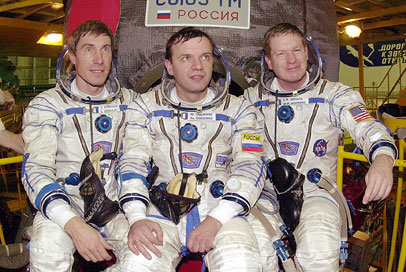
左からロシアの宇宙飛行士セルゲイ クリカレブ、ユリーギドゼンコ、そしてアメリカのビル シェパード、最初のステーション司令官。
From the left are Russian Cosmonaut Sergei Krikalev, Cosmonaut Yuri Gidzenko, and US Astronaut Bill Shepherd, the first station commander.
From the left are Russian Cosmonaut Sergei Krikalev, Cosmonaut Yuri Gidzenko, and US Astronaut Bill Shepherd, the first station commander.
NASAのケーブルテレビのオリジナルライブ画像(mpeg動画)へ:クリック
|
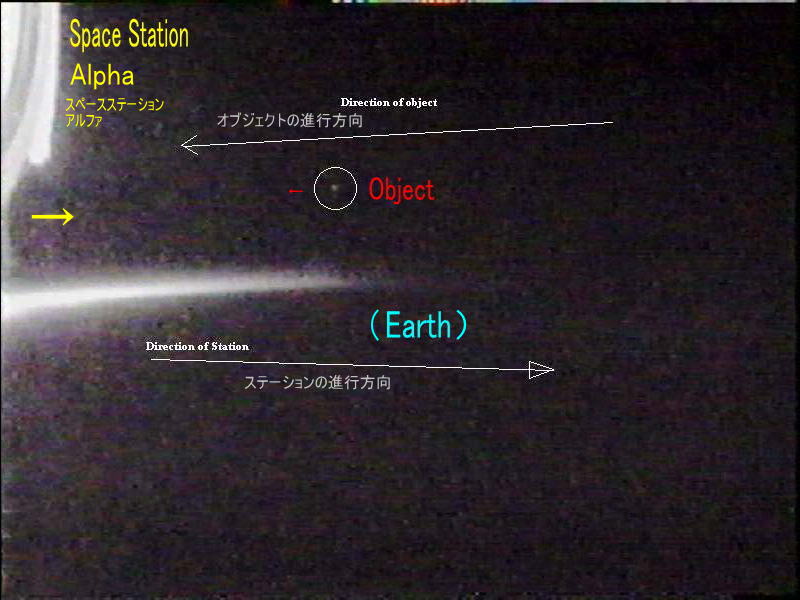


 戻る
戻る